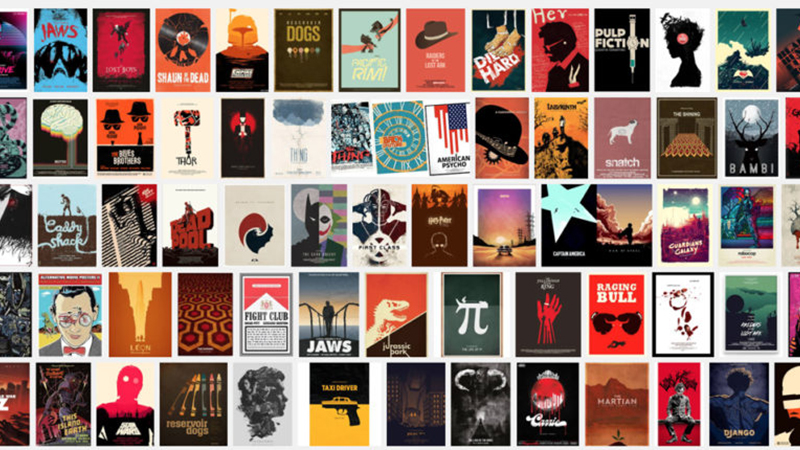What’s Wrong With Alternative Movie Posters?

Many years back before finding my feet as graphic designer, I had started out wanting to be an illustrator.
The work I had done to this point, consisted of cartoons for flyers and sketches for several abandoned comic book projects – all fun, but nothing viable commercially or artistically.
But here I was, a designer on the rise, gladly relegating illustration to brainstorming sessions on flip charts, where I first discovered Mondo.
Mondo is an American company creating limited edition screen printed posters for classic and contemporary films, and it kickstarted an entire industry of likeminded art.
One of the first Mondo posters I saw was Ken Taylor’s ‘Planet Of The Apes’, and it blew my mind. I couldn’t even fathom such a thing was possible – a single artist reimagining and re-contextualising a piece of pop culture.
Eventually, I had the privilege of contributing to the alternative movie poster scene as an artist, with my Killer Joe work. Years later, and alternative poster art is a staple of my social media feeds. It seems everyone’s at it – from stark minimalism to clever use of negative space. All to improve on what seems like uninspired poster work from studios.
And it’s this last point that hints at the problem. It seems a lot of alternative movie poster art now exists as a reaction to actual movie poster art. It’s a bid to out-do the mainstream and lazy graphic design. To show what real creativity is beyond floating heads and bad cut-outs.
So what’s the problem? Surely this is nothing but a good thing?
Who’s It For?
Well, to put it simply, good design does not happen in a vacuum. Like it or not, design is about clients, audiences and customers.
When we design, we’re not creating for ourselves. And that’s probably the biggest skill of the true creative – to get the best from a brief and a client.
In the early days of Hollywood, the function of the poster designer was to get people into the theatre. The goal was to produce a piece of communication that would engage, excite and galvanise not just audiences, but clients too.
Fast-forward to today and that dynamic hasn’t really changed for creatives. Sometimes projects go through multiple rounds of approval, and wind up being pulled apart by everyone from account executives to accountants.
Sometimes our hands are tied, and other times we are simply have no time. So when we – the general public – criticise a piece of visual communication, we seldom consider what transpired for that communication to reach us in the first place.
Imagine then, if every creative brief entailed us indulging all of our passions, inspirations and perspectives, never being challenged or pushed.
What would the creative landscape look like then? Without context, without function, design exists as a mere folly.
It lacks the expressionist value of art, since design has determinable purpose, but removing that purpose at worst results in self-indulgent, egocentric design.
Relationship Goals
This is not a criticism of alternative movie posters, some are truly astounding pieces of creative work. But I would argue that the best of these, are created with a relationship between artist and client. Even if the client is just a company producing posters.
Good, and great design is about relationships and empathy – understanding the needs of clients, audiences, customers – and poster collectors.
– GB
